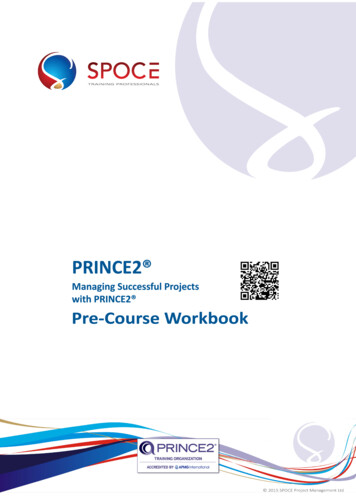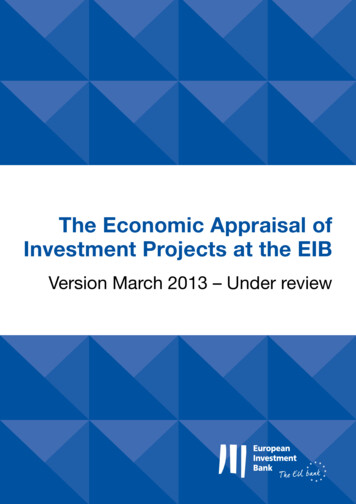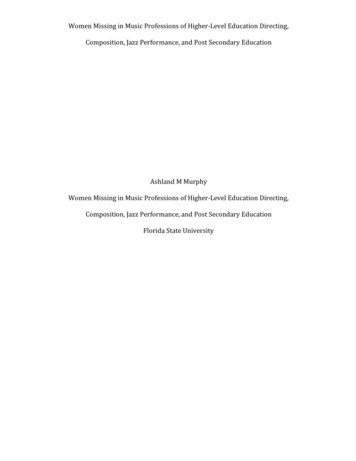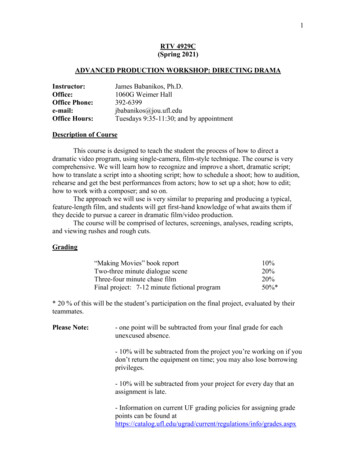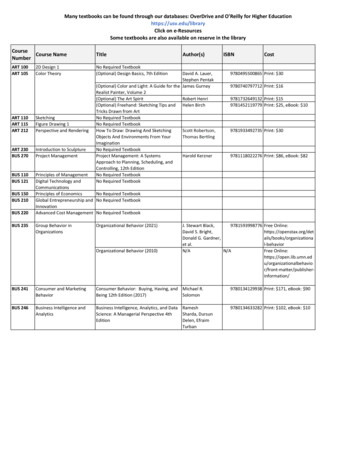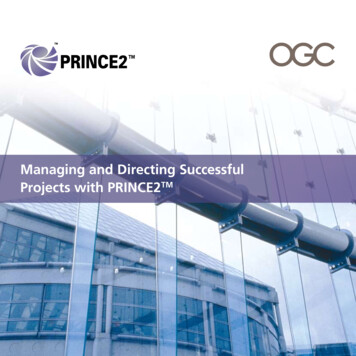
Transcription
Managing and Directing SuccessfulProjects with PRINCE2TM
2Managing and Directing Successful Projects with PRINCE2TMWritten by Andy Murray ofOutperform, Lead Author of PRINCE2this brochure provides an overviewof both Managing and DirectingSuccessful Projects with PRINCE2TM.Why has PRINCE2 beenrefreshed?PRINCE2 is often cited as the world’smost widely used project managementmethod. Its success is largely due to itbeing non-proprietary but also due tothe ability of organizations to apply it toa variety of industries, environments andproject sizes.Since its launch in 1996, the projectmanagement industry has not stood still.The emergence of Agile and iterativeapproaches to project managementdemonstrate there are challengestoday that simply did not exist in 1996.Some aspects of traditional projectmanagement concepts do not servesuch challenges. Therefore the remitfor the refresh went beyond reviewingthe log of issues raised on the manualbut also collected wider feedback andrequirements from the user communityand other interested parties.The refresh project started in November2006 with a six month period of publicconsultation.The public consultation comprised of: Reviewing the Issues Log A series of workshops/focus groupsfacilitated by the Best Practice UserGroup (BPUG) ‘Champion’ interviews of key users A series of surveys.More than 170 organizations andindividuals provided feedback as part ofthe consultation process. Analysis of thefeedback shows a general consensus forchange as follows: Reduce the size of the manual andimprove the style of language (moreguidance less instruction) Integrate with other OGC products Show linkage to other methods andbodies of knowledge Provide more guidance on tailoring(particularly for smaller projects) Include (or reference) the soft aspectsof Project Management (e.g. peoplemanagement, change management,‘fuzzy’ requirements).How was PRINCE2refreshed?The report from the public consultationwas used by a Reference Groupcomprising users, academics andstandards bodies appointed by OGC tohelp create the mandate for change.The project to refresh PRINCE2 wasmanaged using PRINCE2, taking themandate as the trigger to appoint theproject management team and create theproject approach. The project approachwas developed through the use of aReview Group (comprising a broad crosssection of stakeholders) culminating inthe publication of high-level ProductDescriptions for the revised publications.More detailed Product Descriptionswere developed and then subjectedto a design review comprising of theprevious PRINCE2 author, lead authorsthe other OGC Best Practice productsand a selection of sample users. Thedesign review resulted in the baseliningof seven principles upon which PRINCE2would adhere to. The principles definewhat makes a project a PRINCE2 projectand provide guiding obligations for goodpractice when applying the method to aspecific project.The project used an iterative time-boxedapproach of releasing interim drafts forformal quality review by a Review Groupcomprising all stakeholder categories.There were four formal iterations in total.The feedback from each quality reviewwas used to improve the draft manuscriptsready for the final author draft when it washanded over to the production team forcopy-editing and publishing.In parallel to the quality reviews, therevised method was also subjected to anumber of pilots – to prove the changesto the method work in practice. A total of12 organizations participated in the pilots,
Managing and Directing Successful Projects with PRINCE2TMincluding the British Council, Standard Bankand Staffordshire County Council.What are the mainchanges to PRINCE2?Finally, the final author draft was subjectedto an assurance review undertaken bya Change Control Panel on behalf ofthe Project Board. The Change ControlPanel assessed the manuscript againstthe Product Descriptions to assess that allrequirements had been met and just asimportantly that all changes were withinthe scope of the mandate.The most noticeable change is that thereare now two guides for PRINCE2:The overriding approach was one ofongoing public consultation involving allstakeholders throughout the design anddevelopment activities, as can be seenfrom Table 1 below. Managing Successful Projects withPRINCE2 is aimed at people whowork on projects on a daily basis Directing Successful Projects withPRINCE2 provides a guide for thosewho direct or sponsor projects.Managing Successful Projectswith PRINCE2This guide has been designed to be a rolespecific handbook for Project Managers,Table 1 - Stakeholder Participation3Team Managers and Project Support. Thebook provides a universally applicableproject management method – theprinciples, processes and techniques thatenable individuals and organizations tosuccessfully deliver their projects.Key features include outlining theprinciples and processes of PRINCE2,descriptions of the themes of projectmanagement and cross-references toproject management techniques thatmay be useful to apply. Finally the guideprovides context of when and howto use PRINCE2 for different projectenvironments (e.g. standalone or as partof a programme).The manual covers the questionsfrequently asked by people involved inproject management and support roles.These questions include:StakeholderMethodAcademiaSurveys, Reference Group. What’s expected of me?Accreditation Body (APM Group)Project Board, Change Control Panel. What does the Project Manager do?Consulting Providers (ACOs)Workshops, Surveys, Review Group.Central GovernmentProject Board, Workshops, Surveys, Reference Group,Review Group, Change Control Panel, Pilots.Local GovernmentWorkshops, Champion Interviews, Review Group, Pilots.NGOsChampion Interview, Reference Group, Pilots.Private SectorSurveys, Workshops, Review Group, Reference Group, Pilots.Professional Associations(e.g. APM, PMI)Reference Group, Review Group. Who should I look to for support? Fordirection?Publisher (TSO)Project Board, Change Control Panel. How can I tailor the use of PRINCE2for my project?Standards Bodies (e.g. BSI)Reference Group.Tool VendorsWorkshops, Surveys.Training Providers (ATOs)Workshops, Surveys, Review Group. What do I do if things don’t go toplan? What decisions am I expected tomake? What information do I need or must Isupply?
4Managing and Directing Successful Projects with PRINCE2TMThere’s a lot more focus on benefits inthe new managing guide than in thecurrent method; in particular aroundhow benefits need to be tracked andrealised post project and how that relatesto a programme environment. What decisions am I expected tomake?Directing Successful Projects withPRINCE2 What does an effective Project Boardlook like? The need to tailor the method isexplicitly stated and guidance on howto tailor is providedIt is aimed at managers taking on seniorproject roles, either for the first time orfor the first time in a PRINCE2 context. Itacts as a reference guide for managerswho are more experienced in directingprojects and/or using PRINCE2 but whowish to check from time to time thedetailed guidance on specific topics. It has been designed to align withother OCG products; ManagingSuccessful Programmes (MSP ),Management of Risk (M o R ) andthe new Project, Programme andPortfolio Offices (P3O ) guidanceand will enable users to seamlesslyintegrate all four methods andframeworksThis new publication is aimed atsupporting the senior managerresponsible for a project, specificallythose managers undertaking anexecutive role on a project for the firsttime. Covering the duties and behavioursexpected of members of the ProjectBoard, Directing Successful Projects withPRINCE2 can be used as a referenceguide at any stage to check what isrequired – both of the Project Board andof the Project Manager in return.Key features include a PRINCE2 methodoverview, agendas and checklists for theProject Boards’ review, descriptions ofthe management products the Board isexpected to approve and an outline ofrole responsibilities involved.It covers the questions frequently askedby those people who sponsor or directprojects: What information is required/availableto help me make decisions? How do we tailor the use of PRINCE2for projects of differing scale or type?How have these changesimproved PRINCE2?PRINCE2 keeps its core value of beinga universal method that can be appliedto any project regardless of type, scale,culture or geography. The improvementsare based on user feedback on what wasliked/disliked about PRINCE2 and on thedifferent challenges that face today’sprojects.The key improvements to PRINCE2 2009are: What’s expected of me? What should I expect of the ProjectManager? PRINCE2 is less prescriptive and moreflexible How do I know the Project Manager isapplying PRINCE2 appropriately? PRINCE2 is less theoretical and morepractical – based on the input ofover 170 organizations and validatedthrough pilots How do I delegate authority to theProject Manager but keep control? PRINCE2 now has a set of clearlydefined principles. These principlescan be used as a check that PRINCE2is being applied in the spirit in whichthe method has been designed – nottoo rigidly nor superficially The linkage with other standards andbodies of knowledge is clearly shown The importance of the soft aspects ofproject management are emphasised PRINCE2 is not bureaucratic – themethod requires information anddecisions, not documents andmeetings.
Managing and Directing Successful Projects with PRINCE2TM5How do these publications compare to the previous version of PRINCE2?Table 2 - Comparison to the PRINCE2 2005 EditionAreaPRINCE2 2009PRINCE2 2005Principles7 principlesNoneThemes / Components7 themes:8 components: Business Case Organization Quality Plans Risk Changes Progress. Business case Organization Plans Controls Management of Risk Quality in a Project Environment Configuration Management Change Control.7 processes:8 processes: Starting up a Project Directing a Project Initiating a Project Controlling a Stage Managing a Stage Boundary Closing a Project. Starting up a Project Directing a Project Initiating a Project Controlling a Stage Managing a Stage Boundary Closing a Project Planning.Sub-processes40 activities comprising recommended actions. No codes.45 codified sub-processes comprising prescriptive actions.Techniques2 techniques explained (Product Based Planning andQuality Review) and numerous cross-references totechniques from other bodies of knowledge, including‘soft’ aspects.3 techniques explained (Product Based Planning, ChangeControl, Quality Review).Project EnvironmentContext rich guidance on tailoring the method accordingto the project’s environment, including:Not covered.Processes Projects in a programme Commercial customer/supplier relationships Multi-owned projects Alignment with other lifecycle models andbodies of knowledge Project scale.Management Products26 management products with explicit guidance on theirevolution and which ones can be combined.36 management products.
6Managing and Directing Successful Projects with PRINCE2TMTable 2 (Continued)AreaPRINCE2 2009PRINCE2 2005Roles8 roles (Project Board, Senior User, Executive, SeniorSupplier, Project Manager, Team Manager, ProjectAssurance, Project Support).10 roles (Project Board, Senior User, Executive, SeniorSupplier, Project Manager, Team Manager, ProjectAssurance, Project Support, Configuration Librarian,Project Support Office).Suggested competences for each role.Project Board roles now include “duties and behaviours”.ChecklistsProcess based checklists.Component based checklists.Governance checklist aligned to APM’s governanceprinciples.Project Board guidanceRole specific guidance for senior managers who sponsoror direct projects, including:Embedded within the main guide and aimed at ProjectManagers rather than Project Board members. What makes a good Project Board Suggested agendas for Project Board reviews Checklist of key decisions for each Project Board review Pre- and post-project responsibilities.PRINCE2 2009 LibraryThe range of PRINCE2 publicationscover:The publications are available in a range offormats to suit users needs: Hard Copy An Introduction to PRINCE2:Managing and DirectingSuccessful Projects PDF Single User, offers individual access Managing Successful Projects withPRINCE2 Online Annual Subscription, offering thegreatest functionality of the electronicproduct for individuals and across anorganization. Functionality includes:dynamic content - four different ways to viewthe content (Standard, Process, Themes andPrinciples), easy navigation and searching,book marking, cross linking within chaptersand pop-up Glossary Terms. Directing Successful Projectswith PRINCE2 Passing your PRINCE2 Examinations PRINCE2 Pocketbook The Executive Guide to DirectingProjects: within a PRINCE2 and MSPEnvironment. Handheld eBook, downloadable to mosthandheld devices for easy access on the go
Managing Successful Projects with PRINCE2 This guide has been designed to be a role specific handbook for Project Managers, Team Managers and Project Support. The . PDF Single User, offers individual access Handheld eBook, downloadable to most handheld devices for easy access on the go
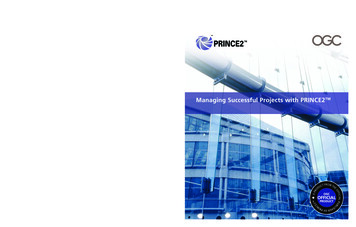
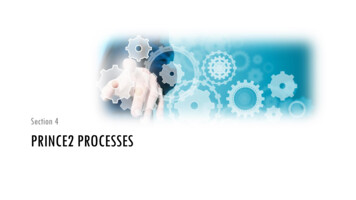
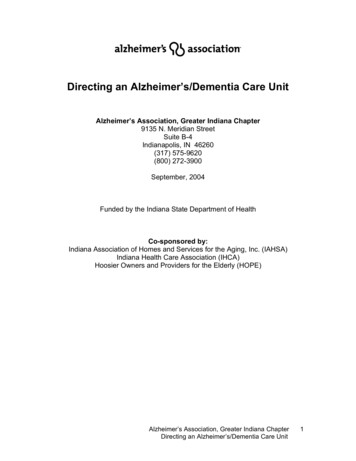
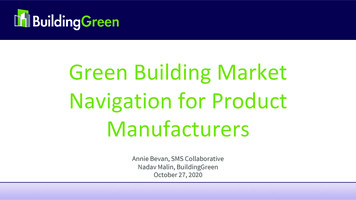
![Managing successful projects with PRINCE2 [PDF] 6th ed.,](/img/18/1-principles.jpg)
